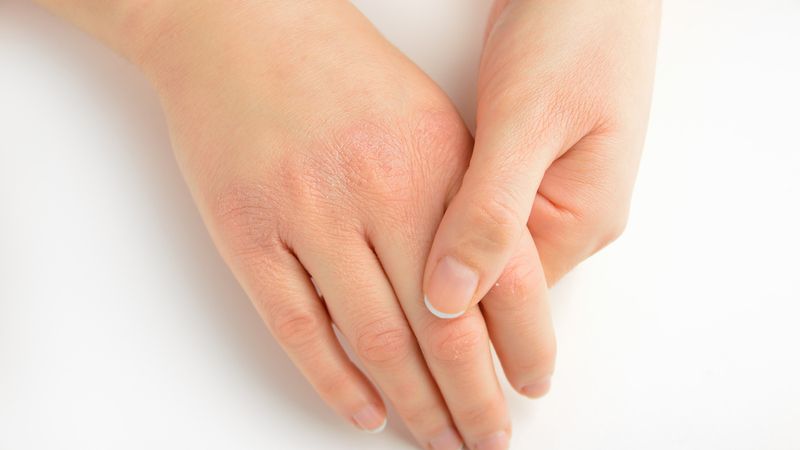

Our Review Process
Our articles undergo extensive medical review by board-certified practitioners to confirm that all factual inferences with respect to medical conditions, symptoms, treatments, and protocols are legitimate, canonical, and adhere to current guidelines and the latest discoveries. Read more.
Our Editorial Team
Shifa Fatima, MSc.
Author
Dr. Apoorva T, MHM.
MEDICAL ADVISOR
Insulin Resistance & How It Effects Skin
Did you know your skin-related problems could be related to your diabetes or more specifically to insulin resistance? Intrigued? Learn more to know about the role of insulin resistance in various skin problems.
Insulin resistance is highly underrated contrary to its significant prevalence—approximately every third person in the United States has insulin resistance. Insulin resistance is characterized by the inability of the cells to respond to insulin, resulting in poor absorption of glucose from your blood. This leads to an increase in blood glucose levels, the pancreas secreting more insulin, and consequently, increased insulin levels.
Insulin resistance is associated with various chronic disorders such as diabetes, skin problems, inflammation, and heart disorders. Skin problems associated with diabetes and insulin resistance include skin dryness, hardness, and itching; you might have already experienced these. There are a few skin problems that are common in people with insulin resistance and these could start to appear during the initial stages as well. Let’s learn about various skin problems associated with insulin resistance.
Acanthosis nigricans
Acanthosis nigricans is a skin condition associated with the overactivity of melanocytes—cells that produce melanin. Melanin is a skin pigment that gives color/ tone to your skin. Overproduction of melanin leads to darkening of the skin, mostly around the armpits, neck, and groin. Additionally, it could appear as patches on the arms, legs, or face.
Melanocytes are responsive to insulin, and insulin resistance leads to the overactivity of melanocytes and the presentation of acanthosis nigricans. This condition is common in people with type 2 diabetes mellitus, usually characterized by insulin resistance. Even children with insulin resistance can develop acanthosis nigricans.
Skin Tags
Skin tags also known as acrochorda are small bumps on the skin that usually appear around armpits, neck, groin, etc. You might have already seen these little flaps on your skin or anyone else’s skin. These little bumps are quite common in people with insulin resistance and diabetes. Skin tags appear in the same areas as acanthosis nigricans.
Skin tags are considered to be related to hyperinsulinemia—a prominent characteristic of insulin resistance. Hyperinsulinemia accentuates the growth and division of keratinocytes—cells responsible for providing structure to skin, leading to the appearance of little protuberances on your skin.
Psoriasis
Psoriasis is a skin condition characterized by chronic inflammation and usually appears as defined areas of skin turning reddish or purplish covered by silver–white scales. Psoriasis vulgaris is quite common and appears on the scalp, elbows, knees, or midsection. Psoriasis has been associated with insulin resistance and people with psoriasis are almost 3-times more likely to develop psoriasis.
Acne
Acne is a common skin condition that most people experience during their teenage or during the initial years of adulthood, presenting as whiteheads or blackheads. Insulin resistance is associated with increased glucose levels and is considered to be higher in people with acne. Specifically, obese people are more prone to acne as they are at a higher risk of developing insulin resistance. A study has shown that obese young men with acne had more insulin levels when compared to lean young men and those without acne.
Skin thickening, delayed wound healing, blisters, sores, and increased risk of skin infections are associated with insulin resistance and increased blood glucose levels. In addition, you might experience dry skin, skin-colored bumps (granuloma annulare), reddish-yellow bumps (eruptive xanthomatosis), reddish-brown patches (necrobiosis lipoidica), or yellowish scaly patches around eyelids (xanthelasma).
Having read about various skin changes associated with insulin resistance, you know you can avoid or delay them. You should become aware and adopt lifestyle changes such as diet plans and exercise regimes to keep insulin resistance at bay. This will help you to avoid skin-related conditions and other complications associated with insulin resistance.
Table of Contents
FAQs
Can insulin resistance cause skin problems?
Insulin resistance is associated with various skin changes as the skin cells are responsive to insulin. Insulin resistance and consequent hyperinsulinemia or hyperglycemia signal the cells to become overactive and result in various types of skin problems.
What does insulin resistance look like on the skin?
Insulin resistance affects the skin in various ways, the most common being skin dryness, itchiness, and darkening. In addition, the appearance of bumps, skin tags, discolored patches, and discolored areas is frequently seen in people with insulin resistance.
How do high insulin levels affect the skin?
The majority of the skin cells are responsive to insulin. As the insulin levels rise beyond control, cells tend to become hyperactive and growth activities are accentuated. This leads to excessive growth, hyperpigmentation, or skin becoming more prone to infections.
What happens to your body when you are insulin resistant?
When you are insulin resistant, cells in your body become non-responsive to insulin. This leads to a cyclic chain of events such as hyperglycemia and hyperinsulinemia. High levels of insulin and blood glucose affect various body organs such as skin, heart, nerves, and muscles and make you more prone to various associated complications.

References
- https://www.hindawi.com/journals/tswj/2015/479354/
Disclaimer
This website's content is provided only for educational reasons and is not meant to be a replacement for professional medical advice. Due to individual differences, the reader should contact their physician to decide whether the material is applicable to their case.








